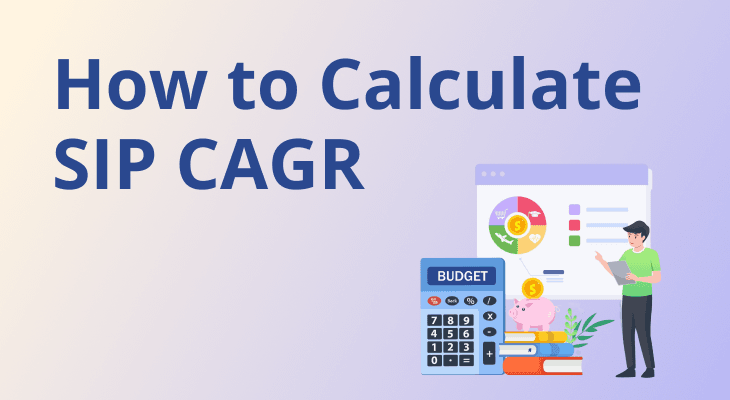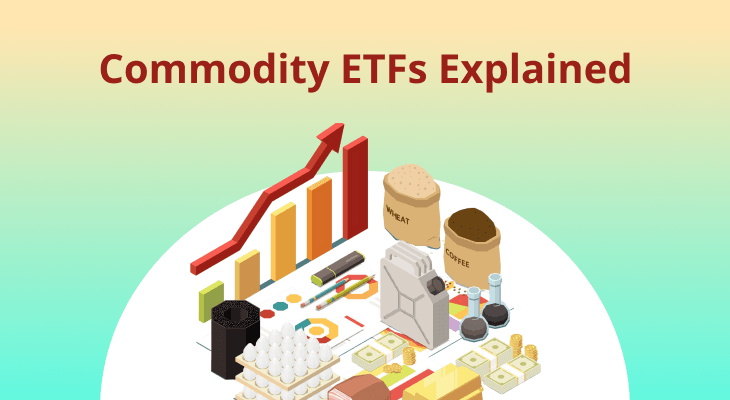
Table of content
- What is the Compound Annual Growth Rate (CAGR)?
- Importance of CAGR in Evaluating Investment Performance
- Calculating CAGR for SIP Investments
- Methods to Calculate SIP CAGR
- Step-by-Step Guide to Using a SIP CAGR Calculator
- Limitations of CAGR
- Alternative Methods to Measure SIP Returns
- Common Mistakes to Avoid When Calculating SIP CAGR
- Conclusion
How to Calculate SIP CAGR & Measure Your Investment Growth
Systematic Investment Plans (SIPs) are a popular way to invest in mutual funds, offering disciplined investment and the power of compounding. But how do you measure the actual growth of your SIP investments? This is where the Compound Annual Growth Rate (CAGR) comes in. Understanding CAGR in SIPs helps you evaluate performance and compare different investments. However, calculating CAGR for SIPs is not as straightforward as it is for lump sum investments due to multiple cash flows at different times. In this guide, we will explore how to calculate CAGR for SIP, different methods to measure investment growth, and alternative ways to assess your returns accurately.
What is the Compound Annual Growth Rate (CAGR)?
Let us begin with the basics – What is CAGR in SIP? CAGR represents the average rate at which an investment grew over a given period, assuming the investment grew at a steady rate every year. It smooths out fluctuations in returns and provides a clearer picture of long-term growth, making it a useful metric for investors.
Formula for CAGR:
CAGR = [(Final Value / Invested Value) 1/Years ] - 1
For example, if an investment grows from ₹ 1,00,000 to ₹ 1,50,000 in 5 years, the CAGR is:
[(1,50,000 / 1,00,000) ⅕] - 1 = 8.45%
This means your investment grew at an average rate of 8.45% per year.
Importance of CAGR in Evaluating Investment Performance
Often, people focus on seeing the total return, but the Compound Annual Growth Rate (CAGR) helps you better understand the average annual growth of your investment over time. This makes it especially useful for periodic, long-term investments like SIPs. CAGR allows investors to ignore the noise of short-term fluctuations and focus on the consistent, long-term growth of their investments. Here’s why CAGR is vital for evaluating SIP performance:
- Accurate Performance Measurement: With CAGR, you get a clearer picture of how well your SIP has grown over time. Unlike absolute returns, which might seem attractive but can be misleading, CAGR smooths out the growth rate, offering a more consistent metric.
- Comparison Across Multiple Investments: It becomes easier to compare SIP returns with other investment options like stocks, fixed deposits, or bonds, as CAGR gives you a standardised annual return.
- Informed Decision-Making: By knowing the CAGR, investors can evaluate the risk-reward profile of their SIP investments more effectively. If the CAGR is consistently low, it might signal the need for a different approach or asset allocation.
- Long-Term Goal Tracking: If you’re investing for long-term goals, knowing the CAGR can help you track whether your investment is on track to meet your financial objectives, such as retirement or buying a home.
Calculating CAGR for SIP Investments
Calculating CAGR for SIPs is more complicated than lump-sum investments due to the periodic contributions made over time. In a lump-sum investment, the entire amount is invested at once, and the growth rate can be easily calculated using the CAGR formula. However, SIPs involve multiple contributions over time, making the calculation more complex. Since new investments are made every month, CAGR does not fully capture the impact of periodic investments. XIRR (Extended Internal Rate of Return) is a more accurate measure of SIP performance.
Let’s consider an example where you invest ₹ 5,000 every month in an SIP for 5 years. At the end of the period, your total investment amounts to ₹ 3,00,000, and the current portfolio value is ₹ 4,50,000. Using CAGR here might give an inaccurate result because it doesn’t factor in the fact that you’re adding ₹ 5,000 every month and buying units at different prices each time. XIRR would be more appropriate to calculate the SIP’s growth.
Methods to Calculate SIP CAGR
1. Manual Calculation Using CAGR Formula
While this method is simple, it isn’t very accurate for SIPs since it assumes the initial investment is the only contribution. It ignores the monthly contributions that significantly affect the final returns.
Let’s say you invested ₹ 5,000 per month for 5 years (total ₹ 3,00,000), and your total investment grew to ₹ 4,50,000. Using the CAGR formula, you would get an average annual return of 8.45%, but this doesn’t reflect the fact that your money was invested at different times, at varying NAV prices.
2. Using XIRR in Excel (Most Accurate for SIPs)
XIRR accounts for the timing of each cash flow, which is crucial for SIPs. It provides a much more accurate picture of how your investment has performed over time. By using the XIRR function in MS Excel or other spreadsheet tools, you can input your monthly investments along with the dates of those investments, which the formula will use to calculate the effective annualised return. This method is highly recommended for SIPs as it precisely accounts for the impact of time and varying contribution amounts.
3. Using a SIP CAGR Calculator
Online SIP CAGR calculators, like the one offered by m.Stock, make it easy to calculate the return on your SIP investment by simply inputting your total investment, tenure, and current value. This, free-to-use, automated tool gives you the CAGR instantly saving you time and minimising the chances of errors involved in manual calculations.
Step-by-Step Guide to Using a SIP CAGR Calculator
Here’s how you can use a SIP CAGR calculator to understand the current returns rate, and compare with other investment options to assess performance:
- Enter the total SIP investment amount.
- Provide the tenure of investment (e.g., 5 years, 10 years).
- Input the final portfolio value.
- Click on ‘Calculate’ to get the CAGR result.
Limitations of CAGR
CAGR is a widely used metric, but it has some limitations, especially when applied to SIPs. Here are the major drawbacks:
- Doesn’t Reflect Market Volatility: CAGR assumes steady growth over time, but the market is rarely constant. For SIPs, the market might go through periods of significant ups and downs, which the CAGR formula doesn’t take into account.
- Ignores the Impact of Additional Contributions: If you are investing monthly, the CAGR won’t reflect the fact that you are adding money regularly. For SIPs, the XIRR method is better because it accounts for each individual investment and when it was made.
- Misleading in Case of Large Fluctuations: A high CAGR can be misleading if there was a sharp spike in the early years of the investment. A high CAGR doesn’t always mean consistent growth — it could just be the result of one or two high returns in the early phase of your investment.
Alternative Methods to Measure SIP Returns
While CAGR is useful, there are other methods that, when used together, might give a better understanding of your investment’s growth.
- Absolute returns simply show the total percentage growth of your investment from the time you started. The formula is: [(Final Value − Initial Investment) / Initial Investment] × 100.
This method is simple and provides an overall view, but it ignores the timing of the contributions. While it’s not ideal for SIPs, it can be used when you need a quick snapshot of your total returns.
- XIRR is the most precise method for measuring SIP returns. It takes into account the exact dates of every investment and calculates the compounded return. Unlike CAGR, XIRR is effective for irregular investment intervals (like monthly SIPs).
- Rolling returns measure how an investment performs over a specific period of time (e.g., 1 year, 3 years, or 5 years). It calculates returns based on various intervals, giving you a better understanding of performance over different periods. This method smooths out short-term market fluctuations and can provide a more reliable picture of long-term performance.
Common Mistakes to Avoid When Calculating SIP CAGR
As you calculate CAGR for SIP investments, there are several common mistakes to be mindful of:
- Using the Wrong Formula: As mentioned, CAGR works best for lump-sum investments but doesn’t account for the multiple contributions made in SIPs. Using CAGR for SIPs can give a misleading result, so it's important to use XIRR for more accurate returns.
- Ignoring Market Volatility: CAGR assumes a smooth growth rate, but market fluctuations can heavily impact SIP returns. If you’re relying solely on CAGR, you might overlook these market changes, which can lead to poor decision-making.
- Not Accounting for Inflation: While CAGR gives you the nominal return, it doesn’t factor in inflation, which affects the real value of your returns. It’s essential to compare your CAGR with the inflation rate to determine your actual purchasing power growth.
Conclusion
CAGR can help evaluate the performance of your investments and by using a SIP CAGR calculator, you save time and minimise errors. But, for a more accurate representation of your SIP's growth, XIRR should be used, as it factors in multiple contributions and varying dates. Understanding these calculation methods and their limitations helps you make more informed decisions about your SIP investments and ensures that you are not missing out on potential growth opportunities.
SIPs let you invest small amounts regularly, making it easier to stay consistent with your goals. With time, your money grows faster through compounding, helping you get the most out of your investments. Try our SIP Calculator to see how your money can grow and make smarter plans for your future
FAQ
What is CAGR in SIP?
CAGR (Compound Annual Growth Rate) is the measure of the average annual growth rate of an investment over a fixed duration, with the assumption that the investment grows at a steady rate. It helps you evaluate returns over time and compare them with other financial instruments to determine long-term profitability.
Why is CAGR important for SIP investments?
CAGR provides a standardised way to measure the return on investment that makes it easier to compare different financial instruments, and helps you track performance objectively. However, rolling returns and XIRR are better alternatives for assessing SIP returns.
How do you calculate CAGR for SIP investments?
CAGR is calculated using the formula:
CAGR = [(Final Value / Invested Value) 1/Years ] - 1
However, this formula assumes a single initial investment, making it less effective for SIPs. Since SIPs involve multiple contributions at different intervals, the XIRR (Extended Internal Rate of Return) method is more accurate for calculating SIP CAGR
What is the difference between CAGR and XIRR for SIPs?
CAGR assumes that an investment is made as a lump sum and grows at a uniform rate over time, which does not reflect the reality of SIPs. XIRR, on the other hand, takes into account multiple SIP investments made at different times and calculates the internal rate of return based on actual cash inflows and outflows. This makes XIRR a better method for calculating SIP returns.
How can I calculate SIP returns using Excel?
To calculate SIP returns accurately in Excel, use the XIRR function, list all your SIP investments in one column, enter corresponding investment dates in another column, and add the final portfolio value.
Is there a simpler way to calculate SIP CAGR?
Yes, using an online SIP CAGR calculator simplifies the process. You just need to enter your total investment amount, the tenure, and the current portfolio value. The calculator will then compute the CAGR instantly.
Does CAGR account for market fluctuations?
No, CAGR assumes a constant growth rate, which does not reflect real-world market fluctuations. SIP returns are affected by market volatility, economic conditions, and fund performance, which CAGR does not consider.
Can CAGR be negative for SIP investments?
Yes, if the final value of the investment is lower than the total invested amount, the CAGR can be negative. It indicates a loss and suggests that the fund's performance has been poor.
How do I compare SIP CAGR with other investments?
SIP CAGR can be compared with fixed deposits, stocks, gold, or other mutual funds to determine relative performance. However, CAGR alone is not enough; you should also consider risk, volatility, and liquidity before making investment decisions.
What are the common mistakes in SIP CAGR calculation?
Common mistakes include using CAGR instead of XIRR for SIP returns, ignoring market fluctuations and assuming CAGR represents actual performance, which can be misleading. You should also factor in inflation while assessing returns.


